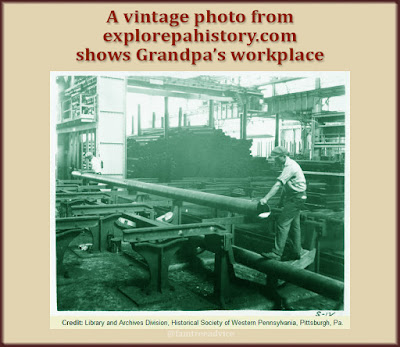These 4 tips will come in handy when you can't find that census.
Once in a while—but very rarely—I look at someone else's family tree research. My policy is to ignore hints and not look at other trees. Here's a situation where I will break my policy.
Today I wanted to write about 3 tips for finding a missing census for someone in your family tree. I had a case recently that seemed like a great example to share.
I was researching a family with a head of household named Costanzo delGrosso. I found him and his family living in Galeton, Pennsylvania, in 1930. His name was mistakenly written as Costanza DelGross, but it was him. Costanzo lived at 86 Germania Street. I noticed his neighbors' last names were Sollo, Greco, and Esgro.
 |
| Three families lived next to mine in 1930 and 1940. Finding them in 1920 led to my family. |
Then I found Costanzo and his family in 1940. He still lived at 86 Germania Street. His neighbors were still named Sollo, Greco, and Esgro.
But I could not find Costanzo and family in the 1920 census. I had immigration records showing his family was in the U.S. since 1913.
Where were they hiding in the 1920 census?
Here are the tips I used to find that missing census.
Tip #1. Search for their address in the missing year.
The delGrosso family was at 86 Germania Street in 1930 and 1940. It's logical to search for them at the same address in 1920. But they weren't there. When this happens, be sure to check houses and streets that are close to the address you want.
Tip #2. Search for their neighbors in the missing year.
Costanzo's neighbors were the same in 1930 and 1940. Why not search for them in 1920 and look at the households nearby?
 |
| The right hint can set you in the right direction and open up the floodgates. |
These tips led me to Costanzo and his family. They were a census sheet away from their future neighbors, and a block away from their future address. The problem was, Costanzo delGrosso's name in the 1920 census is written (and indexed) as Grosso Delroso. Grosso Delroso!
Most of his family's names are also recorded a bit differently in 1920 than they are in later years:
- Lucy becomes Lucia in 1930 and Lucie in 1940
- Libera becomes Labra in 1930 and Lea in 1940
- Mauro becomes Morris in 1930
- Deny becomes Daniel in 1930 and 1940
So keep your eyes and your mind open to different spellings.
While I found the missing census by searching for a neighbor, this brings me to another search tip.
Tip #3. Search for family members by their first names only.
How someone recorded Costanzo delGrosso as Grosso Delroso is beyond me. But did you know you can leave out the last name from a search and use first names to find the family?
Now I had 3 tips to share with you for finding a missing census. So I set out to apply these tips to Victor Abbate whose 1940 census is missing. And that led to…
Tip #4. Consult another family tree for leads.
As I said at the top, I usually ignore anyone else's family tree research. But today I got lucky.
I was trying to find Victor after he'd married and moved out of his father's home in Brooklyn, New York.
A family tree search result caught my eye. The owner of the tree knew Victor's exact birth date. All I knew was 1900. She had his parents' names as Frank and Mary. I had Francesco and Mary, so that's a match. And she had his proper name as William Vito Abbate. Did she see his birth certificate? I showed you how the delGrosso family's names changed from census to census. Is that how William Vito became Victor?
Besides the 1920 census, this family tree led me to the missing 1925 New York State census where "Victor" is "William". It led me to their 1915 New York State census where he's called "Willie"! And it led me to their 1905 New York State census where he's listed as "Victo". All the other facts fit. There's no doubt this is the right family.
I'm not taking any fact or document directly from this family tree. Instead, the tree pointed me to all the original documents I was missing. Now I know who "Victor" he married, who his children were, when he died, and where he's buried.
Will every hint from a family tree be this useful? No. But I want you to be open to using other trees as leads. Not as fact, but as leads for your research.
In 2018 I had a genealogy research goal of finding every missing census I'd listed in my document tracker. There were some I couldn't find—like Victor Abbate in 1940. With these 4 tips, I'm ready to take another look for them.
Which of your families have missing census sheets?











